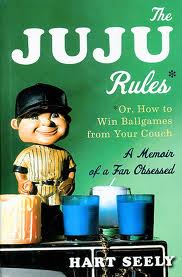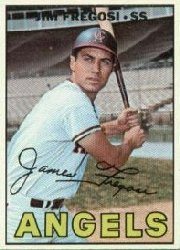Hart Seely is one unique Yankees fan.
Lots of us may think or feel that way about our favorite team (or the OTHER guys). We may have said it aloud over a beer. Or, we may have said it louder at a game. However, he’s the one who put it all in writing and added his name to it.
As evidenced by last week’s blog, I loved his book The Juju Rules* Or, How to Win Ballgames From Your Couch: A Memoir of a Fan Obsessed. I’m grateful to this pinstriped wit for sharing an update on his Yankees lifestyle in this feisty, fun e-interview:
Q: Loved Juju Rules! It’s a fun confessional. However, I was surprised that you didn’t ‘fess up to having a Yankees COLLECTION. What kind of memorabilia has tempted you? I can’t imagine any “fan obsessed” not being some level of collector!
A: I don’t consider myself a true collector, in the Aristotelian sense of the word. A collector collects. I amass.
I have about a ton of Yankee stuff – I mean debris, detritus, crapola! But I cannot bring myself to catalogue it or bring order unto its chaos. We’re talking piles, haystacks, mounds. Someday, after I’m dust, some reality TV picker show will have a field day going through my office. They’ll need a backhoe.
I have one autographed ball from Rizzuto and one from Joe Torre, which Alphonso – a main character in the book, as you know – somehow wrangled; he gave it to me last Christmas. I have manila envelopes stuffed with autographed pictures and postcards from the Scooter, who always included signed glossies when we exchanged letters (a couple of which are framed.) I’ve got old Yankee programs, picked up at garage sales. In fact, they hover over my desk right now, threatening to topple onto the keyboard where I am typing. Yankee things come my way, and even though I consider myself a misery bastard when it comes to keeping memorabilia, I don’t throw out Yankee stuff.
Also, I have about 15 Yankee t-shirts, including one that promotes “Typhoon Irabu” and another that says, “I BRAKE FOR YOUKILIS BEANINGS.” (By the way, he recently attained his 15th HBP at the hands of Yankee hurlers; if he stays healthy, I think he could reach 20.)
I believe that our generation’s greatest contributions to history will be the Internet, domed sports stadiums and our t-shirt collections.
Q: In the book, we don’t know if you actually got autographs from Rod Scurry or Clete Boyer. Please, can you share an example of getting any Yankee signatures in person or through the mail?
A: I didn’t get either. Scurry was, realistically, out of pen range. But I’ll forever kick myself for not hanging in there and getting Clete’s. Here’s a post-script to the story in my book about meeting Clete Boyer with my two sons on a hot midway kiosk at the New York State Fair:
He was selling autographs, and I was ready to buy one. There was nobody standing behind us. Clete seemed to be really grateful that I was there, and we were having a great little chat. But this young guy hovering over him – punker hair, looking bored and cynical – barked at me, “If you’re not going to buy an autograph, please move on.” I was so stung that – well – I just moved on. Clete looked sad, too. He was going to just sit there and watch people pass. I left him sitting there. I’ve regretted it ever since.
As for getting autographs, here’s my secret: Write a book about a guy, and he showers you with autographs. How Alphonso managed to get Torre’s name on a ball is between him and God.
Q: Speaking of fan mail, have you details of any current or former Yankees who read Juju Rules?
A: No. As far as I know, it hasn’t sunken in yet. I feel like the guy running that radio signal tower in Peru – or maybe it’s Arizona – shooting messages off into deep space. I still haven’t heard a response from Alpha Centari.
Actually, I’m not sure if today’s ballplayers will understand or appreciate my book. It takes somebody special, like Tony LaRussa. He’s not your average athlete – or your average manager.
Q: I’m glad to know Scooter enjoyed the poetry collection. I loved knowing how he inscribed your copy. Did he ever do a book signing?
A: No. In the beginning, ECCO Press was trying desperately to arrange something, but it was a tiny publishing house, and I think Phil was uncertain about kind of reception the book would receive, and everything fell through. After that, I don’t think anybody tried.
I would tell friends to send Rizzuto a book and a self-addressed return envelope, and I gave them his home address – he allowed that; that’s how he was. He would autograph the book and include a pile of autographed glossies and usually a nice note. People would call me to say they were overwhelmed by his reply. They’d say, “Wow, you and he must be really close!” even though we’d only met once. That’s the kind of person he was.
Q: For other readers of Juju Rules wondering how they’d get their copy autographed…any suggestions? (Signed bookplates?)
A: Best thing to do, if anybody wants a signed book or anything, is write me at the Syracuse Post-Standard, Clinton Square, Syracuse, NY 13221, where I work. I’ll do my best to overwhelm them – but I have no glossies. I’ll figure something out, if only to honor the memory of The Scooter.
Coming Monday: An autographed update from Sid “Sid Slid” Bream.



